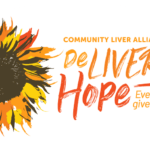Recovery from a drug dependency needs struggle, some period, willpower, and help. Rehabilitation is a long time procedure. Whenever you choose to go into a specialized drug therapy program, you will start a journey with four different phases of drug recovery as you know to develop a well and sober living.
The four phases of treatment are:
1. Treatment beginning
2. Early sobriety
3. Maintaining sobriety
4. Advanced rehabilitation
Phase 1: Treatment beginning
Whenever you seek help from an expert drug recovery program, you start the main stage of your healing, treatment commencement.
In the starting hours and days of your recovery, you presumably will have some irresolute emotions about surrendering your medication of decision for all time, and you may believe that your substance misuse issue isn’t as terrible as others’. Be careful about this disposition. Inner conflict and refusal can be your most exceedingly awful adversaries in the starting days of your recovery.Now in detox Austin treatment, the objective is to support the person to choose to effectively partake in therapy and acknowledge that sobriety is the goal. To achieve this, an element misuse therapist may support the person to do the accompanying:
• know the harmful impacts of drug dependency
• recognize the sentiments of disavowal concerning the issue
• support the individual become inspired to recuperate
During this phase of treatment, a person’s drug use history will be taken. The therapy program will be presented, and the therapist will work with the person to build up an individualized treatment plan.
Phase 2: Early sobriety
Whenever you have made a guarantee to proceed with treatment for your substance misuse issue, you will enter the second phase of recovery, known as early sobriety. Early restraint from drugs fundamentally connected with positive treatment outcomes. This can be the most challenging stage to adapt to because of numerous components, including:
• Continued withdrawal indications
• Physical longings
• Psychological reliance
• Triggers that can entice you into a backslide
Difficulties at this phase of treatment incorporate desires, prevalent problems to drink, and high-hazard circumstances that can trigger liquor utilization. During this early forbearance stage, your prepared enslavement guide will show you the adapting abilities to lead a calm way of life.The apparatuses that you figure out how to utilize now will help you all through your healing. Early restraint gives that are chipped away at now in treatment, including finding out about the physical and mental parts of withdrawal, figuring out how to recognize liquor use triggers, and figuring out how to deal with liquor desires without drinking.
A few procedures that can be useful include:
• Encouraging interest in sound exercises
• Finding elective practices to participate in as opposed to going to drug
• Participating in self-improvement gatherings that offer help and data
• Recognizing ecological triggers that lead to yearnings, including individuals, spots, and things.
Phase 3: Maintaining Abstinence
After roughly 90 days of constant forbearance, you will move from the early restraint phase of healing to the third stage, looking after patients. If you began in a privatedetox austin treatment program, you would presently move to your recovery program’s proceeding or subsequent directing period on an outpatient premise. One focal point of this phase of recovery is clearly to keep up forbearance by evading a backslide. You will get familiar with the notice signs and the means to pave the way to a backslide.
During this phase of your restoration, you will figure out how to put the devices that you learned in early forbearance to use in different parts of your life, so you can keep on carrying on with a calm way of life. You will find that your future personal satisfaction relies upon more than just not utilizing.
You will learn new adapting aptitudes and devices to support you:
• Avoid subbing addictions
• Build sound connections
• Develop a medication-free way of life
• Learn the business and cash the executive’s aptitudes
• Manage outrage
• Utilize exercise and sustenance
The keeping up forbearance phase of recovery will start at around a quarter of a year into your restoration program and last until you arrive at roughly five years spotless and calm. At that time, the subsequent advising will typically end.
Phase 4: Advanced Recovery
After around five years of forbearance, you will arrive at the fourth and last phase of your recovery: progressed recuperation. At this point, you take all the devices and abilities you have picked up during your recovery advising and put them to utilize living a fantastic, satisfying life.
Systems that can help now include:
• Creating long haul objectives
• Establishing a predictable day by day plan
• Forming social associations with individuals who don’t drink
• Participating in recreational exercises that don’t include drug
• Finding approaches to reach past oneself to look for satisfaction and satisfaction, regardless of whether it includes religion, otherworldliness, network work, or social activism
Figuring out how to actualize these methodologies not exclusively will assist you with staying calm. Yet, you will have what it takes to turn into a more beneficial individual, a superior companion and parent, a profitable citizen, and a decent neighbor and resident. Recovery is considerably more than only remaining calm. It’s figuring out how to carry on with a more joyful and more advantageous life.
A drug dependency treatment and rehabilitation is a long-time procedure that needs some commitment and changes in many sides of an individual’s life. These four phases of treatment can support an individual with drug use syndromes know about the advantages of rehabilitation, observe the inspiration to change their attitude, and acquire new expertise that will support them succeed in the lifetime
Throughout the year, our writers feature fresh, in-depth, and relevant information for our audience of 40,000+ healthcare leaders and professionals. As a healthcare business publication, we cover and cherish our relationship with the entire health care industry including administrators, nurses, physicians, physical therapists, pharmacists, and more. We cover a broad spectrum from hospitals to medical offices to outpatient services to eye surgery centers to university settings. We focus on rehabilitation, nursing homes, home care, hospice as well as men’s health, women’s heath, and pediatrics.
Disclaimer: The content on this site is for general informational purposes only and is not intended as medical, legal, or financial advice. No content published here should be construed as a substitute for professional advice, diagnosis, or treatment. Always consult with a qualified healthcare or legal professional regarding your specific needs.
See our full disclaimer for more details.







